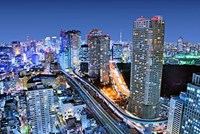 Read the peer reviews for this article
Read the peer reviews for this article
My first article (pages 26-31) examined the current rather ad hoc approach to station development in Britain that has characterised the past 60 years… and still does. This article looks at more structured and planned approaches to realising the mutually supporting benefits of rail travel and station hubs - focusing on some overseas examples and then on the beginnings of a new policy in Britain on the back of powers devolved to the regions.
So many converging factors are driving the increased use of public transport in Britain that there is little doubt that railway stations will become even more important as focuses of development and urban planning. With an awareness that the only sustainable way to plan for the huge and continuing increases in urban populations is by densification comes an acceptance that the transport hierarchy must place road vehicles - and especially cars - at the bottom.
The fossil fuel-powered car is one of the world’s most grotesquely inefficient machines, both spatially and physically, using less than 1% of fuel consumed for its primary purpose of moving usually a single occupant from A to B. Population pressure and soaring land values are likely to combine to make the use of urban space for the parking of cars (as well as multi-lane roads) look untenable. London’s population is expected to reach ten million before 2030, and if only one in five people owned a car, it would require an area ten times the size of the City of London just to park them.
Greater understanding of the ill-effects of traffic pollution - and its cost to healthcare systems as well as the economy - has made it a burning issue in cities throughout the world. A February 2016 Royal College of Physicians report calculated that the cost of polluted air on the NHS, business and other costs in the UK came to more than £20 billion a year.
London’s new mayor, Sadiq Khan, is hoping to inject a new sense of urgency to reducing the capital’s pollution - if his call for greater powers, including road tax, is accepted by the Government (or it is forced to by the High Court action brought by ClientEarth). Khan’s plan is for a T-charge, a toxicity levy on the filthiest vehicles, as well as extending the Congestion Charge to the North and South Circular roads. Most ambitiously, he is also calling for a scrappage scheme for diesel vehicles, to accelerate improvements - the Government’s low-emission zone plans would only bring London’s air quality within legal limits by 2025.
“The big problem is that not only have the oldest diesel cars failed to live up to official environmental standards, so too have many more recent ones,” says RAC Foundation Director Steve Gooding.
The most recent Defra air quality plan includes Clean Air Zones (see Table 2, page 36) for five cities (Birmingham, Derby, Leeds, Nottingham and Southampton) where councils will impose charges on polluting vehicles, to discourage them from coming into city centres. The potential for technical fixes has been discredited, and even if they held promise, that would not help reduce congestion. Retailers in London’s West End have demanded that traffic be halved by 2020 - it is no coincidence that pedestrianisation increases retail turnover.
Progressive cities recognise that they must present a pleasant environment to attract companies and inward investment. High volumes of traffic make it impossible to create welcoming spaces, and studies of streets have shown that there is an inverse relationship between social interaction and traffic density.
As the Foresight Future of Cities report by the UK Government’s Office for Science summarises: “The quality of the physical environment plays an important role in mental well-being - among the significant factors are noise and light levels, building layouts and way finding, and access to nature. The design of everyday products, buildings, transport systems and information communications devices all contribute to levels of stress or contentedness; a sense of inadequacy or self-efficacy; and isolation or connection to others.”
All this determines the ‘liveability’ of a city, and the focus on good local, regional and national transport in the Foresight project’s research puts railway stations centre stage.
Regarding the legally binding targets agreed at the 2015 Paris conference on climate change, Sir Mark Walport, the Government’s Chief Scientific Advisor, says: “Cities will be key places where the energy policies that will be needed to achieve this ambition will succeed or fail. Transport within the city is evolving in ways that encourage walking and cycling and improve health - the increasing use of bike schemes in London, in particular, is an example of this. Technology will help improve public transportation, for example through the many apps which are simplifying our movements in cities. They tell us how to get from A to B and, importantly, what we might find when we get there.”
But as Brent Toderian, the former chief planner of Vancouver, says, ‘What’ is easy - ‘how’ is the hard part. So how have other countries done it?











